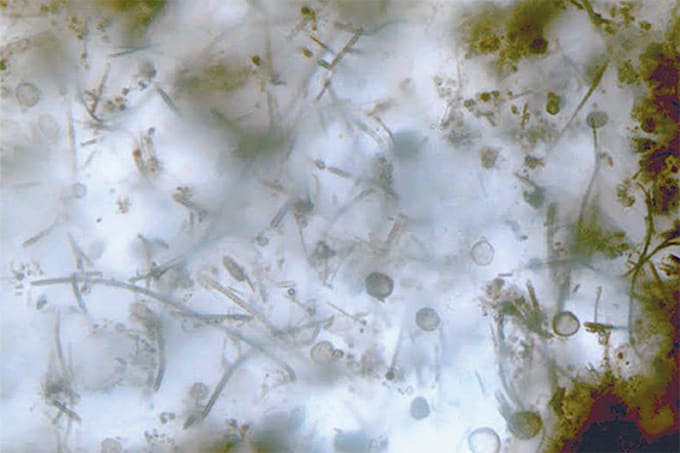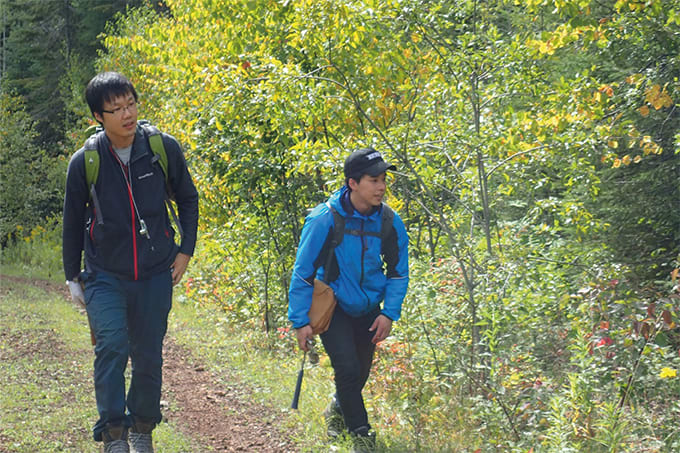What was your route into analytical science?
I was always interested in science, but I didn’t want to study a subject for its own sake – I wanted to help people. I decided to take forensic science for my undergraduate degree and that’s when I was introduced to analytical chemistry.
What is your current research focus?
I work on a variety of applications of odor analysis. Within forensic science, my primary focus is profiling the odor from decomposing remains. For example, we provide information to organizations who train human remains detection canines (“cadaver dogs”). The dogs are very good at their job but we still don’t fully understand the science behind what they do. By better understanding the subtleties of the odor profiles that the dogs are reacting to, we can boost the value of the evidence (important in the courtroom) and provide useful information to handlers; this information can be used to choose the most appropriate samples for training the dogs, and how those samples should be stored to keep the odor profile consistent.
What was your route into analytical science?
I was always interested in science, but I didn’t want to study a subject for its own sake – I wanted to help people. I decided to take forensic science for my undergraduate degree and that’s when I was introduced to analytical chemistry.
What is your current research focus?
I work on a variety of applications of odor analysis. Within forensic science, my primary focus is profiling the odor from decomposing remains. For example, we provide information to organizations who train human remains detection canines (“cadaver dogs”). The dogs are very good at their job but we still don’t fully understand the science behind what they do. By better understanding the subtleties of the odor profiles that the dogs are reacting to, we can boost the value of the evidence (important in the courtroom) and provide useful information to handlers; this information can be used to choose the most appropriate samples for training the dogs, and how those samples should be stored to keep the odor profile consistent.
The analytical targets we develop could also be used to develop electronic odor analyzers. We’re a long way from being able to replace dogs, but man-made detectors could be used to support their training, and might one day be able to support them in the field. Dogs, like people, cannot operate around the clock and complementary tools could be used to cover a larger area, faster.
What are the main tools you use?
First, we use a range of sorbent-based sampling tools. To analyze the sample, we typically use comprehensive 2D GC with both a quadrupole mass spectrometer and a flame ionization detector. Having two detectors operating at the same time allows us to do identification on one detector and quantification on the other. The samples we are analyzing have complex odors that require good resolution between peaks. I believe multidimensional chromatography will help answer some of the really big questions in odor analysis.
The use of odor analysis data in court has proved controversial….
I don’t think we’ll see odor profiles being used routinely in crime labs – at least not for the next five years or more. The best-known example is probably the trial of Casey Anthony. In that case, the prosecution tried to use odor analysis to prove that a body had been in the trunk of a vehicle. The expert witnesses in the case had conflicting opinions about the scientific value of that evidence, which has created a lot of skepticism about our field of study. It’s important to point out that since that trial in 2011, we have a much better understanding of cadaveric odor profiles and a wealth of published literature behind us. When the case was tried, experts would have been testifying with only four or five published papers to refer to – now, they would have around 50. But there are important questions to answer before it becomes a routine tool in forensic science.
You seem to really enjoy the teaching aspect of your role – what makes a good teacher?
You have to try new things – I’ve never taught the same class in the same way. One thing I’m passionate about is teaching effective communication skills. As I tell my students: to be a successful scientist today, you need to be able to communicate. For example, if they appear in court as an expert witness, they will need to communicate complex ideas in a straightforward and confident manner. Another way in which I do things a little differently is to bring research projects into the classroom. Rather than just a few undergraduates doing summer research projects, we involve the whole class. It’s not a new idea, but it’s been exciting to try it with advanced techniques, such as GC-GC, which aren't usually taught untill graduate level or above.
And what makes a good student?
In my experience, the students that excel are the ones who are able to identify their passion early on. If you find something that you’re passionate about, it doesn’t feel like work.
Is that how you feel about your work?
Absolutely. When I started my undergraduate degree, I envisaged working in a crime lab. But once I got to grad school and started teaching, I realized that if I became an academic I would probably never have two days the same for the rest of my life. And that’s turned out to be true. I love it!
What are your plans as co-chair of the Multidimensional Chromatography Workshop?
My co-chair Pierre-Hugues Stefanuto and I are busy planning the 11th Workshop in January. I attended the event early in my career and the inspiring people I met there were a major factor in my decision to enter the field. I was delighted to take on the role of co-chair, which allows me to give other young scientists the same amazing experience I had. Registration is free and, as it’s a smaller event, there’s plenty of chance to network and get advice from experts in the field.
The 11th Multidimensional Chromatography Workshop will be held in Honolulu, Hawaii, on 5-7 January 2020.... Find out more.




